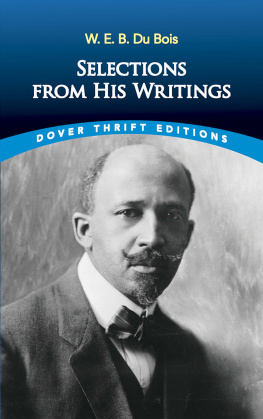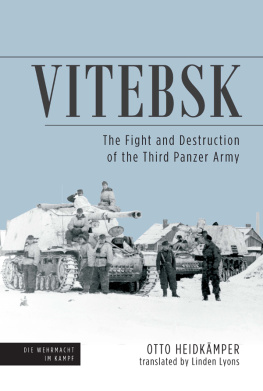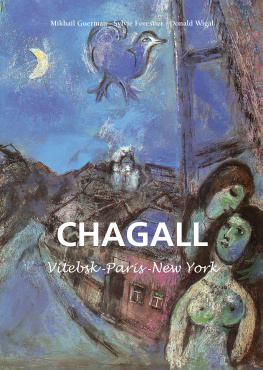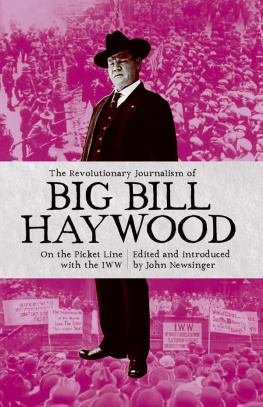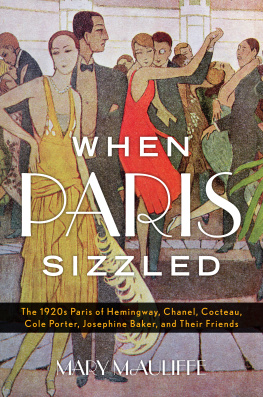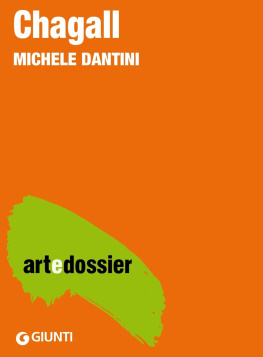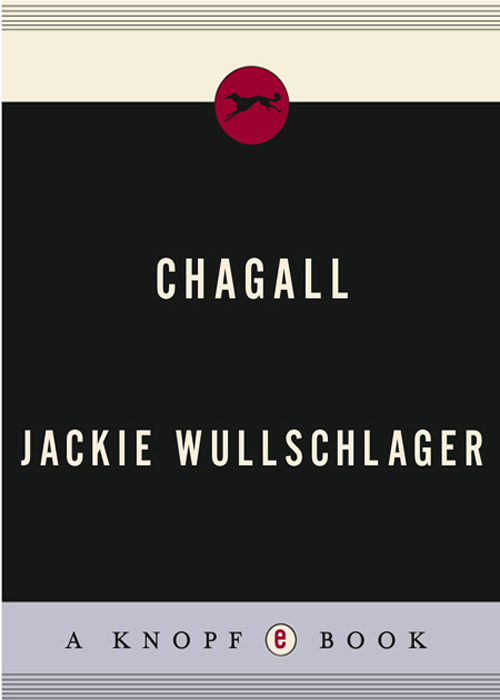
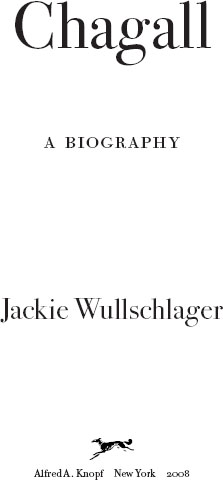
CONTENTS
For William
ILLUSTRATIONS
All images are provided by kind permission of the Comit Marc Chagall, Paris, except where other wise noted. All works by Marc Chagall copyright 2008 by ADAGP, Paris and DACS, London.
IN TEXT
COLOUR PLATES
VITEBSK, ST. PETERSBURG, AND PARIS, 19081913
RUSSIA, 19141922
FAMILY PORTRAITS AND SELF-PORTRAITS
EXILE, 19231985
ACKNOWLEDGEMENTS
My greatest debt is to Meret Meyer Graber, Chagalls granddaughter, without whom this book could not have been written. I would like to thank her first for the exceptional generosity and confidence with which she allowed me access to the Archives Marc et Ida Chagall, including the extensive collection of Chagalls letters and papers hitherto unseen by scholars, and for giving me freedom to quote from them while claiming no influence on my narrative or interpretation. She also put at my disposal the vast resource of drawings, paintings, studies, and photographs, many little known and unpublished, in the family archive, guided me through it to select illustrations, and, in a gesture of extraordinary magnanimity, substantially reduced reproduction fees, which would otherwise have been prohibitive. I owe more than I can say to Meret: I have benefited, too, from her memories of her grandfather, her acute understanding of family identity, her perception as an art historian, and from her warm, extended hospitality, which brought Chagalls Parisian environment to life.
One revelation of the family archive was the correspondence between Chagall and his first wife, Bella, whose contribution to his art, especially in keeping Russia alive for him in exile, had a defining impact. In tracing Bellas role, I supplemented information from her letters by conversations with her niece Bella Zelter, whom I would like to thank for her great kindness in sharing her memories, giving me access to her papers and photographs, and providing valuable background on the Rosenfeld family in Vitebsk.
For details of the second part of Chagalls life, I am most grateful for many chances to talk to the late Virginia Haggard-Leirens. Virginia generously showed me her letters, photographs, and sketches, and discussed with me her years as Chagalls companion. Her daughter Jean McNeil was also extremely helpful and illuminating about this period.
Anyone writing on Chagall is incalculably indebted to two seminal works which continue to shape understanding of his work: the first book on the artist, by his friends Abraham Efros and Yakov Tugendhold, published in Moscow in 1918, and the unrivalled art-historical study by his son-in-law Franz Meyer, first published in German in 1962, and written in close collaboration with the artist. I have also drawn on Chagalls own memoir My Life, published in French in 1931. Benjamin Harshavs Marc Chagall and His Times: A Documentary Narrative (2004), a pioneering collection of mostly Yiddish correspondence, has been a vital resource, as has work on Chagalls early years by Yakov Bruk, archivist at the Tretyakov Gallery, Moscow, published in the catalogue to the Tretyakovs landmark Chagall exhibition of 2005.
I owe special debts to the immensely knowledgeable and very kind Myrtille Giraud at the Comit Marc Chagall in Paris, who located and supplied images for almost all the illustrations, and to Jean-Louis Prat, president of the Comit and former director of the Fondation Maeght, for allowing me to tap his long reminiscences of Chagall and for hospitality in St. Paul de Vence. I am also particularly indebted to the warmth and generosity of Hilary Spurling, most inspiring of biographers, and Jan Dalley, arts editor of the Financial Times, who have been staunch enthusiasts, perceptive readers of my manuscript in whole or in parts, and have given me invaluable advice from first to last.
Dmitri Smirnov, Elena Firsova, and Philip Firsov proved indispensable as translators and for their inexhaustible knowledge of Russian culture. Early enthusiasm from Gerard and Alison McBurney, beacons for all aspiring scholars of things Russian, was stimulating and reassuring. Elizabeth McKellar gave courage and faith in the project at moments of doubt. Alastair Macaulays continuing support and pertinent responses from both sides of the Atlantic benefited every aspect of the book, and Lorna Dolans gesture of confidence made an enormous difference.
At all stages, scholars, curators, gallerists, and librarians across the world have been generous with help, information, or sharing their memories of Chagall: Ruth Beesch at the Jewish Museum, New York; the late Heinz Berggruen, founder of the Museum Berggruen, Berlin; Valentine Dolla, formerly of the Foundation Maeght, St. Paul de Vence; Jean-Michel Foray, former director of the Muse National Message Biblique Marc Chagall, Nice; Jennifer Francis at the Royal Academy, London; Miriam Haefele, who kindly copied unpublished letters written by Chagall and his daughter at the Deutsches Literaturarchiv in Marbach; Tamara Karandacheva, director of the Museum of Fine Arts, Minsk; Ludmila Khmelnitskaya, director of the Marc Chagall Museum, Vitebsk; Maria Liberman at the International Center for Russian and East European Jewish Studies, Moscow; Florence le Moing at the Runion des Muses Nationaux, Paris; Vera Moriakhina at the European University, St. Petersburg; Norman Rosenthal, former exhibitions secretary at the Royal Academy, London; Eugenia Petrova at the State Russian Museum, St. Petersburg; Guy Picarda at the Francis Skaryna Belarusian Library, London; Ekaterina Seleznyova at the State Tretyakov Gallery, Moscow; Leily Soleimani at the Guggenheim Museum, New York; Annette Weber, professor of Jewish Art History at the Hochschule fr J dische Studien, Heidelberg; Seth Wolitz, professor of Judaic Studies at the University of Austin in Texas. Staff at the British Library also made heroic efforts on my behalf in tracking down and ordering material published in Russian.
My publishers Stuart Proffitt at Penguin and Charles Elliott at Knopf and my agent and friend Carol Heaton offered unwavering support, understanding, and meticulous attention, as well as good company, during a project that they gracefully accepted as taking far longer than anticipated. I am also very grateful to Penelope Vogler, Cecilia Mackay, and Philip Birch at Penguin and Leslie Levine, Wesley Gott, and Andrew Dorko at Knopf.
It is a pleasure to acknowledge, too, the advice, assistance, or insights of many other friends and colleagues: Monica Acosta; Aline de Bievre; Christopher Cannell; Dinah Cannell; Theresa Chiccano; Joanna and Sue Freeman; Louise Gale; Robert Greskovic; Mark and Sarah Holford, for exuber ant hospitality in Cap Ferrat; Howard Hodgkin; Robert Hughes; Ian Jack; Rahul Jacob; Nicolette Jones; Nella Lodola; the late Hyam Maccoby and Cynthia Maccoby; Veronica Marris; Monsignore Klaus Mayer of St. Stephans Cathedral, Mainz; Werner Merz bacher; Richard Nathanson; Sam and Tess Neaman; Martin and Catherine Rodger, for an introduction to All Saints, Tudeley; Rebecca Rose; Natasha Semenova; Miranda Seymour; Lindy Sharpe; Natasha Staller; Deborah Steiner; Andy Stern; Daniel and Zehava Taub; and David Vaughan.
My interest in Chagall has endured over decades, and many ideas were discussed with my father, Gunter Wullschlger, before he died, and with my mother, Maria Wullschlger, whose wonderful commitment to the project and indefatigable domestic help were essential. My best thanks go to her and to my children: Naomi Cannell for joyful company on many Chagall journeys, where her calm and diplomacy smoothed rough paths; Zo Cannell for long chats about art and people, which enriched my perceptions of both; Raphael Cannell for illuminating the mother-son relationship that Chagall reckoned the bedrock of his art.
Next page

